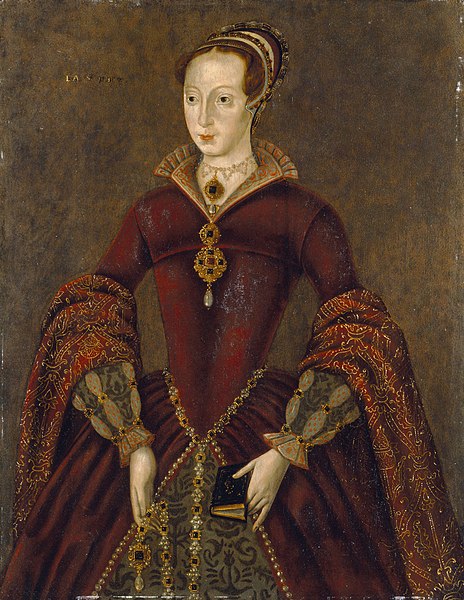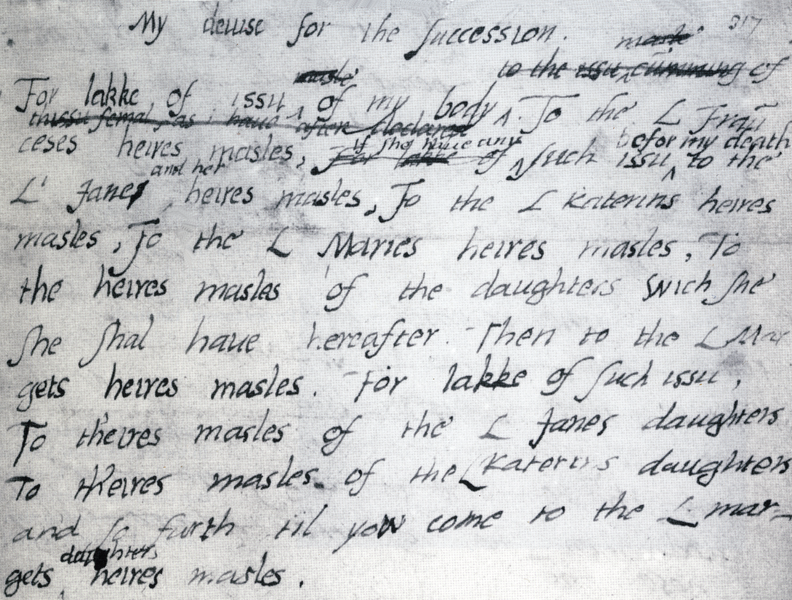Home > NOBILITY & OTHERS > LADY JANE GREY
LADY JANE GREY

Portrait Thought to be Lady Jane Grey
Date of Birth: Autumn, 1537
Date of Death: February 12, 1554
Crime: High Treason
Biography
Lady Jane Grey, also known as “the nine days queen” reigned from 10 July 1553-19 July 1553. Her predecessor was Edward VI and her successor was Mary I. Lady Jane Grey was in line for the throne because she was Edward VI’s first cousin once removed. On his deathbed, the young King Edward named Jane as his successor instead of his half sisters, Mary and Elizabeth. He did this because he thought (with the help of an influential advisor) that it was the only way to save the protestant religion, as Jane was a firm believer of the reformed religion and his half-sisters were strongly catholic. Edward VI died on 6 July 1553 and on 10 July 1553 Jane was officially proclaimed Queen. Edward's "divise for the succession" which named Jane queen.
This became a major issue in England because the English people were very divided between Protestantism and Catholicism. Because of this division, there were both supporters for Jane and Mary. However, a couple days into Queen Jane’s reign, the councilors decided to meet at Baynard’s Castle and it was there that, almost unanimously, they decided to support Mary over Jane. They declared Mary queen on that day. It was then that the Tower of London, Jane’s home, became her prison. After Lady Jane Grey, the Tower of London was never again used as a royal palace.
Trial and Execution
When Mary was declared queen, Lady Jane was found guilty of treason. Evidence of this treason was signing “Jane the Queen”. Jane pled guilty and was sentenced to death. On 12 February 1554 she and her husband were beheaded. Two days later, her father was also beheaded. Lady Jane was executed inside the Tower of London, on Tower Green. Queen Mary sent Lady Jane a priest because in attempt to convert Jane back to Catholicism because “she [Mary] was...madly devoted to the Catholic religion. But it was utterly useless to attempt to shake Lady Jane in her belief”(1) Lady Jane Grey was true to the reformist religion until the very end.
Historic Significance
The underlying cause of Lady Jane Grey's conviction and beheading was largely due to religion. England was very religiously divided at this time and as stated previously, Jane was strongly Protestant while Mary was strongly Catholic. It is also believed that Jane did not really want to be queen, but being born into a royal family and being named Edward's successor really left her no choice. This may be why Jane pled guilty to high treason without much of a fight--though there was an unsuccessful Protestant rebellion (Wyatt's Rebellion in 1554) which was associated with Jane and even delayed her execution. Although Lady Jane Grey had nothing to do with the rebellion, her father did and this also helped seal Jane's fate.
Lady Jane Grey's beheading became a symbol of division in religion in England. Both Catholics and Protestants had been and would continue to been prosecuted in England during this time. Jane happened to be Protestant during a time when Catholics came to power. Jane was made an example out of to other Protestants--this is especially evident when Mary tries to convert Jane while she is being held in the Tower of London. The struggle between Catholics and Protestants was a very serious matter and thousands of lives were lost due to religious differences in England.
(1) David Bartlett, The Life of Lady Jane Grey Auburn (Derby & Miller, 1853) 235.

Edward's "divise for the succession" which named Jane queen


